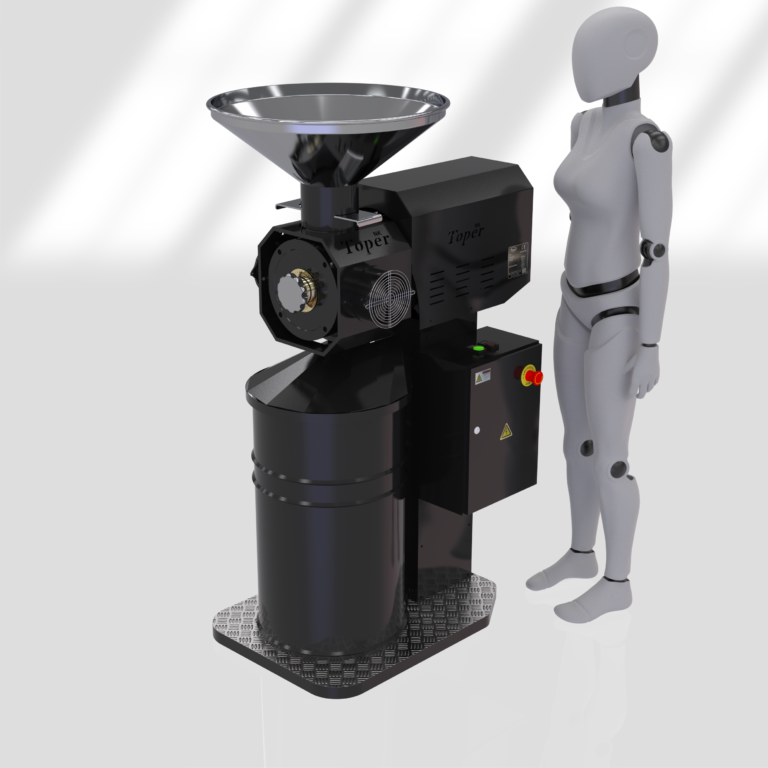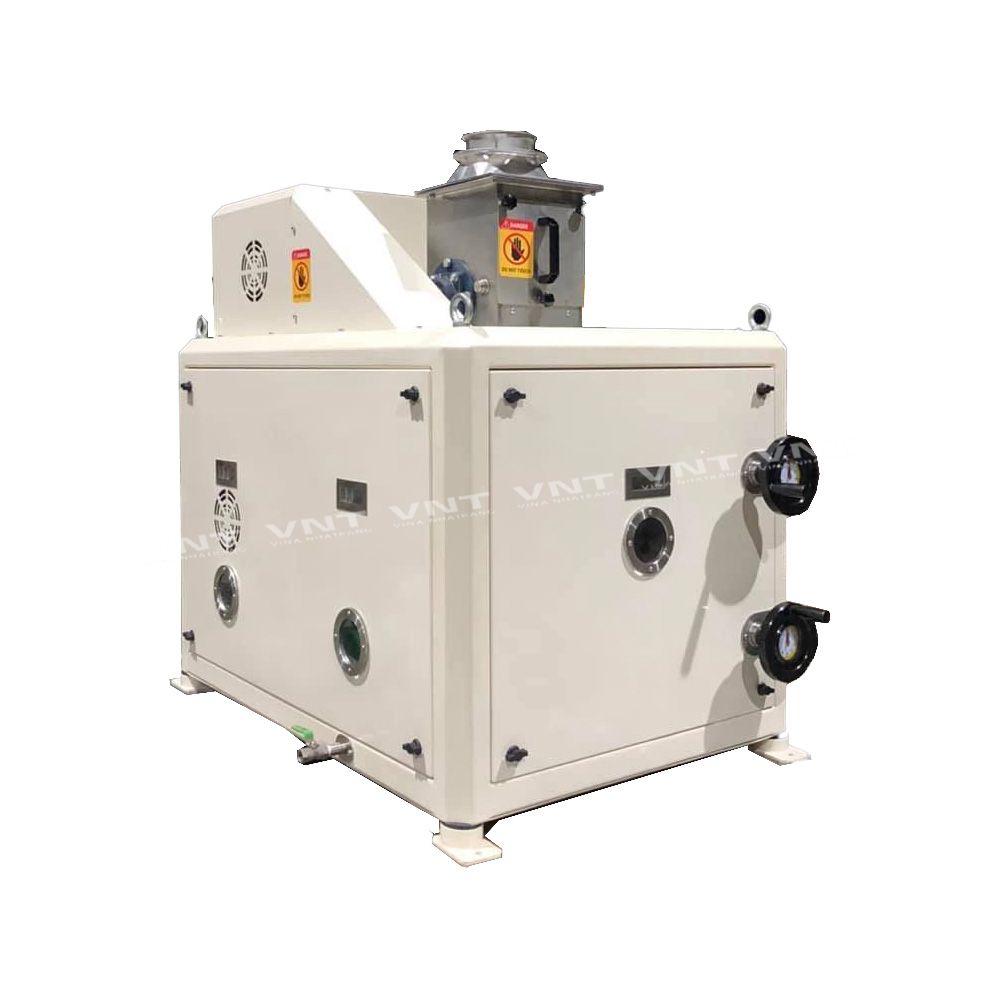How an Industrial Coffee Grinder Can Boost Your Coffee Quality
Industrial Coffee Mill Overview: Increase Efficiency and Quality
In the competitive landscape of coffee production, choosing the right industrial coffee mill plays a crucial function in improving both performance and item quality. Comprehending the subtleties of different grinder types and essential functions-- such as personalized grind setups and durable building-- can significantly influence the final taste account of the coffee.
Recognizing Grinder Kinds
When selecting an industrial coffee mill, recognizing the different types available is essential for maximizing both flavor extraction and operational performance. Both main sorts of grinders are blade grinders and burr mills. Blade mills make use of sharp blades that cut coffee beans right into irregular sizes, causing unequal extraction and possibly undesirable tastes. While blade mills are often extra appropriate and cost effective for small-scale procedures, they are normally not recommended for commercial usage.

Ultimately, picking the appropriate kind of mill is essential to maintaining quality and performance in coffee production, making it important for organizations to invest in high-grade burr grinders for optimal results.
Key Functions to Consider
Selecting a commercial coffee mill calls for careful consideration of a number of vital features that can substantially affect both efficiency and the overall coffee experience. One of the main elements to review is the grinding mechanism. Burr grinders are typically preferred over blade grinders, as they offer a constant work dimension, which is crucial for optimal extraction and flavor.
Another vital function is the grinder's capacity. A flexible mill with multiple settings permits you to tailor the grind dimension to different developing approaches, enhancing the coffee's taste profile.
The building material likewise contributes in toughness and upkeep. Stainless steel parts typically use long life and are simpler to clean, which is necessary for keeping hygiene requirements. Last but not least, evaluate the mill's noise level, specifically in a busy coffee shop or production environment, where too much noise can be disruptive. Spending in a mill that stabilizes these functions can substantially enhance both operational performance and the high quality of the coffee offered.
Optimizing Grinding Refine
To achieve the most effective results in coffee preparation, enhancing the grinding procedure is necessary. The work size significantly affects removal, taste, and overall high quality of the brewed coffee. Various developing techniques require particular grind sizes; for example, coffee demands a fine work, while French press demands a crude structure. Understanding the relationship between work dimension and brewing approach is the primary step in optimization.


In addition, checking the grinding rate can enhance the procedure. Slower grinding commonly generates less warmth, maintaining delicate flavors and aromas. Conversely, faster grinding may generate excessive heat, negatively affecting the official statement coffee's top quality.
Upkeep and Care Tips
Appropriate upkeep and care of commercial coffee grinders are crucial for ensuring optimal performance and long life. Regular cleansing is the structure of maintenance; residue build-up can influence taste and grinding performance. It is advisable to cleanse the grinder after each usage, cleaning down the outside and eliminating any kind of coffee grounds from the burrs.
In addition, check the grinding burrs for deterioration. Dull burrs can endanger work uniformity, so they must be changed as required. Industrial Coffee Grinder. Occasionally calibrating the grinder is additionally important, as this keeps the preferred work size for numerous brewing methods
Lubrication of relocating components need to be executed according to the manufacturer's specifications, as this lowers rubbing and extends the life of the tools. It is necessary to use food-grade lubricating substances to make certain safety and security and compliance with wellness policies.
Lastly, maintain the grinder in a secure and completely dry environment to avoid corrosion and corrosion. By sticking to these maintenance and care pointers, drivers can boost the effectiveness of their commercial coffee grinders while guaranteeing top notch output and expanded operational life.
Roi Analysis
Reviewing the roi (ROI) for commercial coffee mills is crucial for services looking for to enhance their coffee manufacturing capacities. A thorough ROI analysis aids identify the financial practicality of buying premium mills, permitting businesses to weigh the preliminary expenses against prospective gains.
To carry out a detailed ROI analysis, services must consider a number of essential aspects. First, analyze the purchase price of the grinder, consisting of installment and any type of necessary modifications to existing facilities. Next off, compute functional prices, including power usage, upkeep costs, and labor efficiency improvements. High-performance mills usually lead to minimized grinding time and enhanced throughput, which can considerably discover here enhance performance.
In addition, take into consideration the impact on product quality. Industrial Coffee Grinder. Superior mills yield a more constant grind dimension, which can boost taste profiles and customer complete satisfaction, inevitably driving sales. By boosting the high quality of the last item, businesses can justify higher pricing, causing boosted earnings
Final Thought
In recap, i loved this a commercial coffee grinder plays a pivotal function in boosting both performance and product top quality within coffee production. Inevitably, the strategic financial investment in a reputable mill contributes substantially to enhanced profits and competition in the coffee sector.
In the competitive landscape of coffee manufacturing, picking the ideal industrial coffee grinder plays a critical role in boosting both performance and product high quality. The two key types of grinders are blade mills and burr grinders. Within the burr grinder category, there are level burr grinders and cone-shaped burr grinders, each with its advantages. Burr grinders are usually chosen over blade mills, as they provide a consistent work size, which is vital for optimal extraction and taste.
In summary, a commercial coffee grinder plays a pivotal role in improving both performance and product high quality within coffee manufacturing.